Captured Overhand Cuff
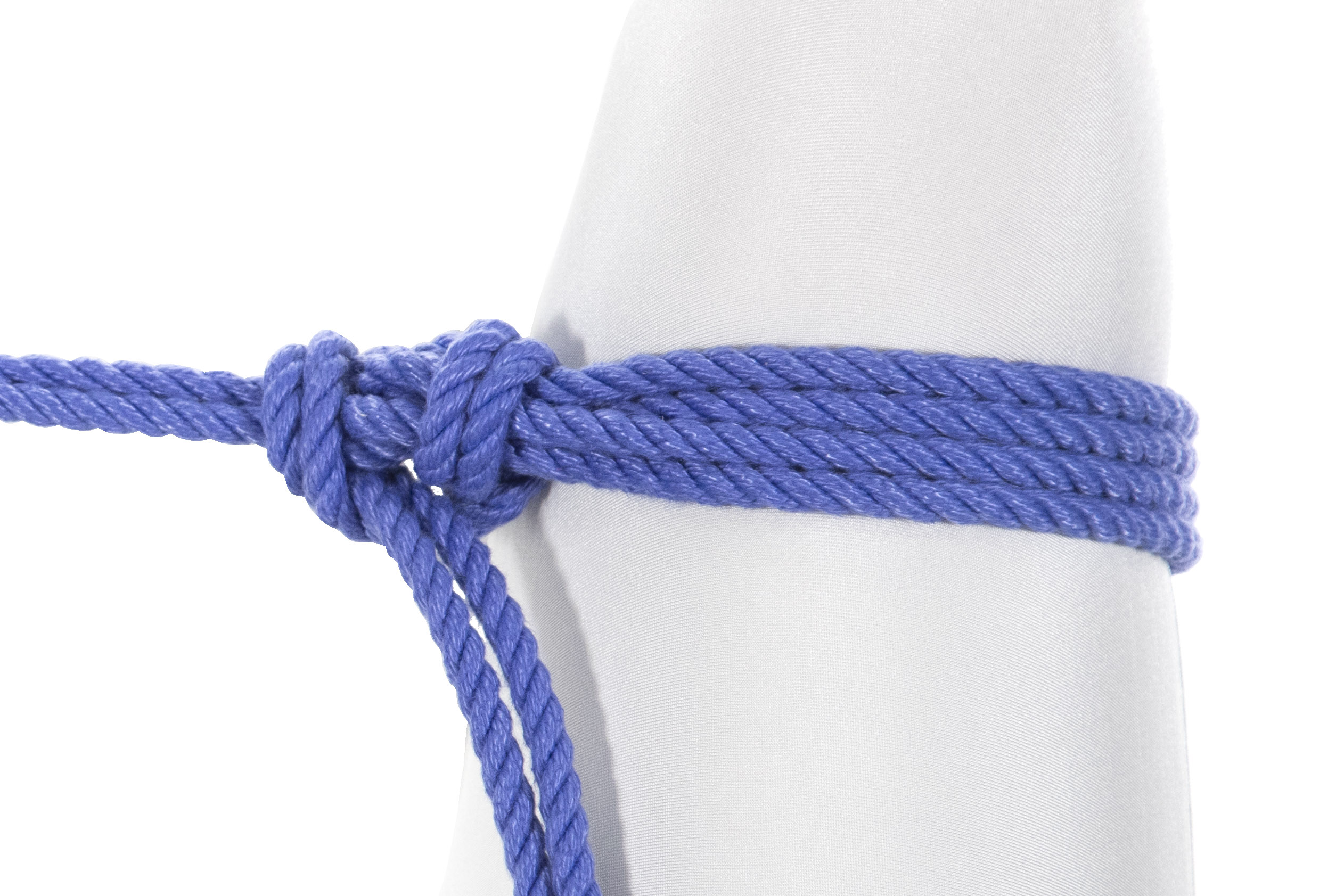
The captured overhand cuff is a more stable version of the hojo cuff. Compared to the hojo cuff, it has the great advantage of being stable no matter how it’s loaded.
The disadvantage of the captured overhand cuff is that it’s slower and more fiddly to tie. We don’t use it often, but it’s a useful technique to have in your back pocket.
Step by step
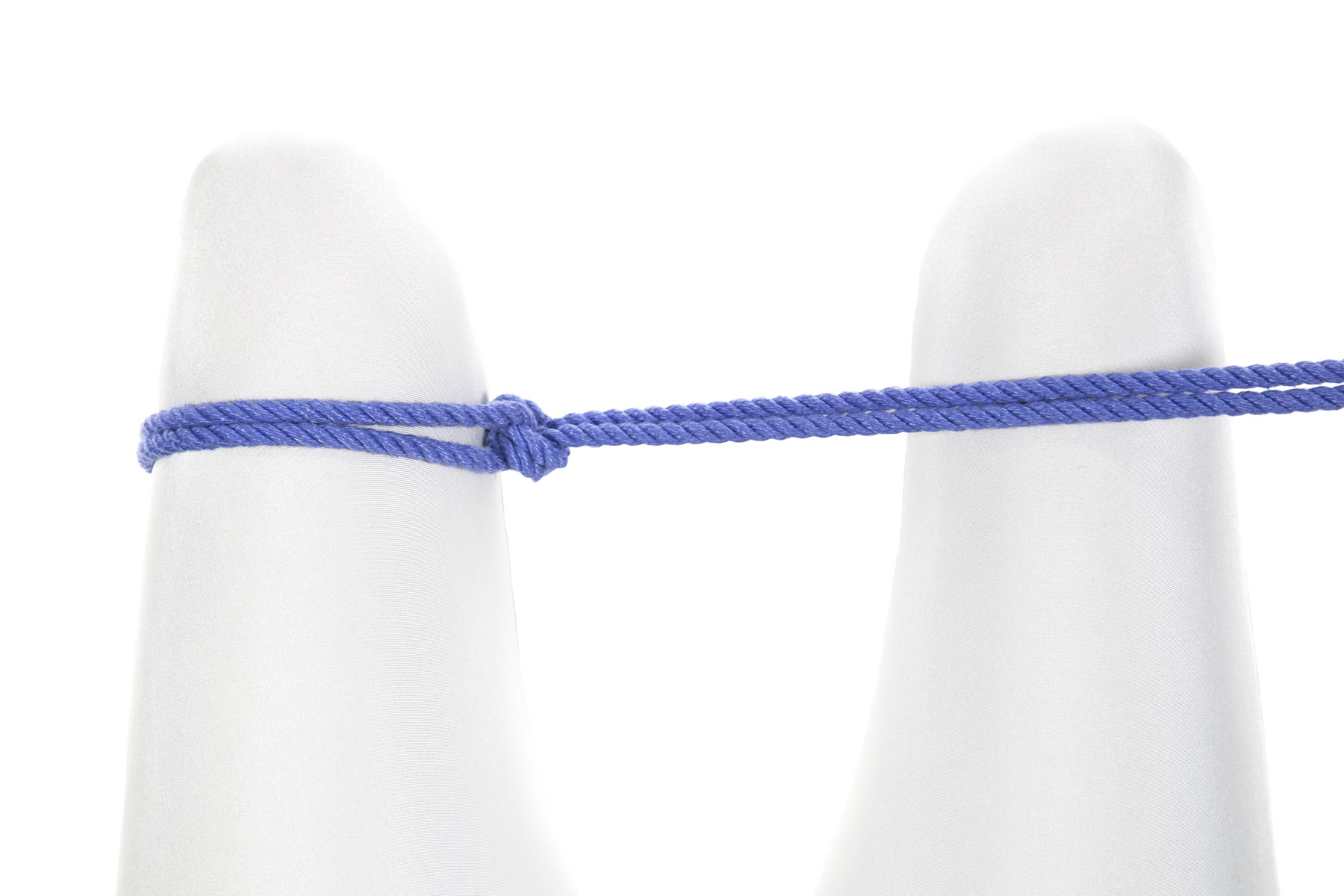
1Tie your favorite column tie around your left leg and run the rope over to your right leg.
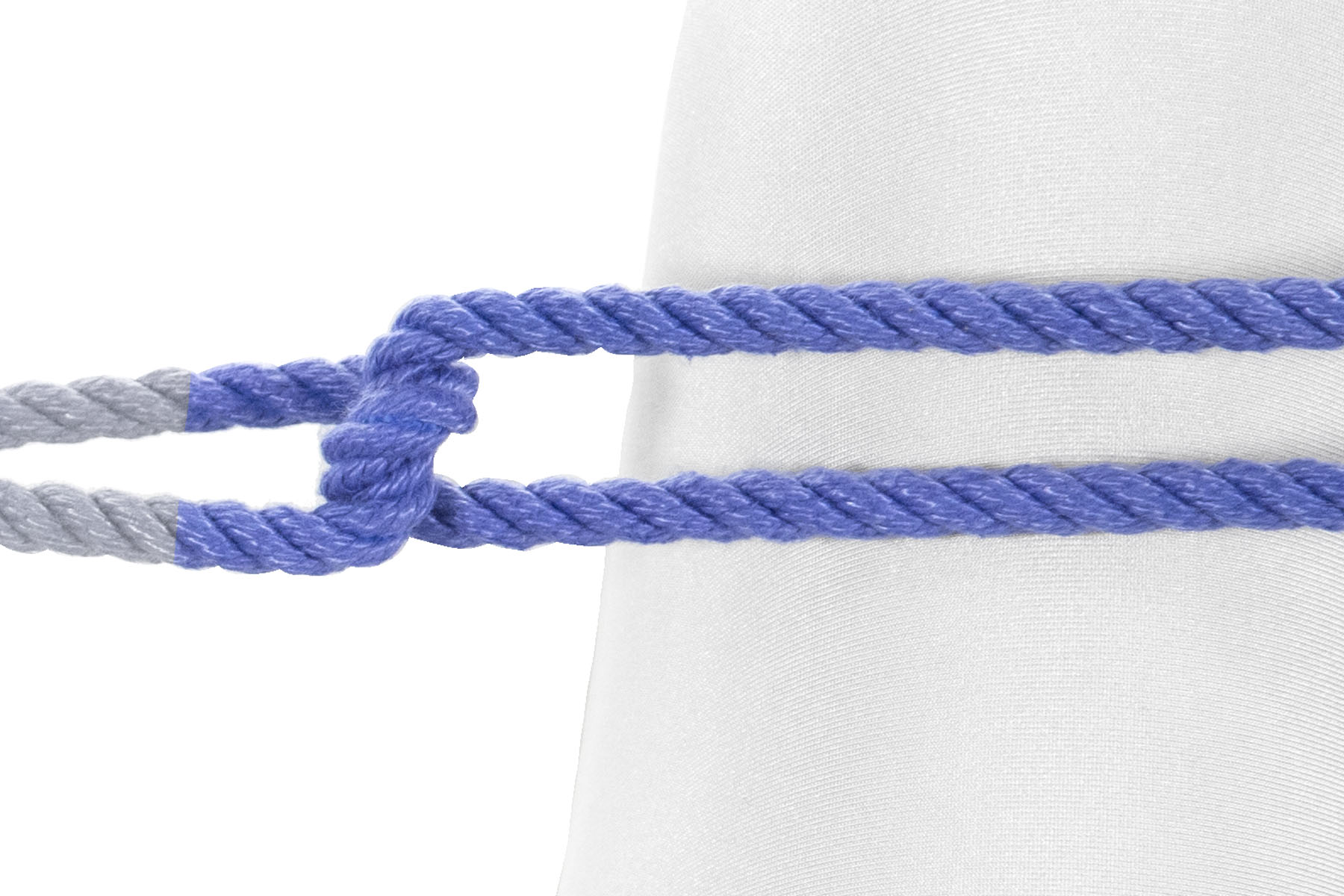
2Tie an overhand knot right where the rope meets your right leg.
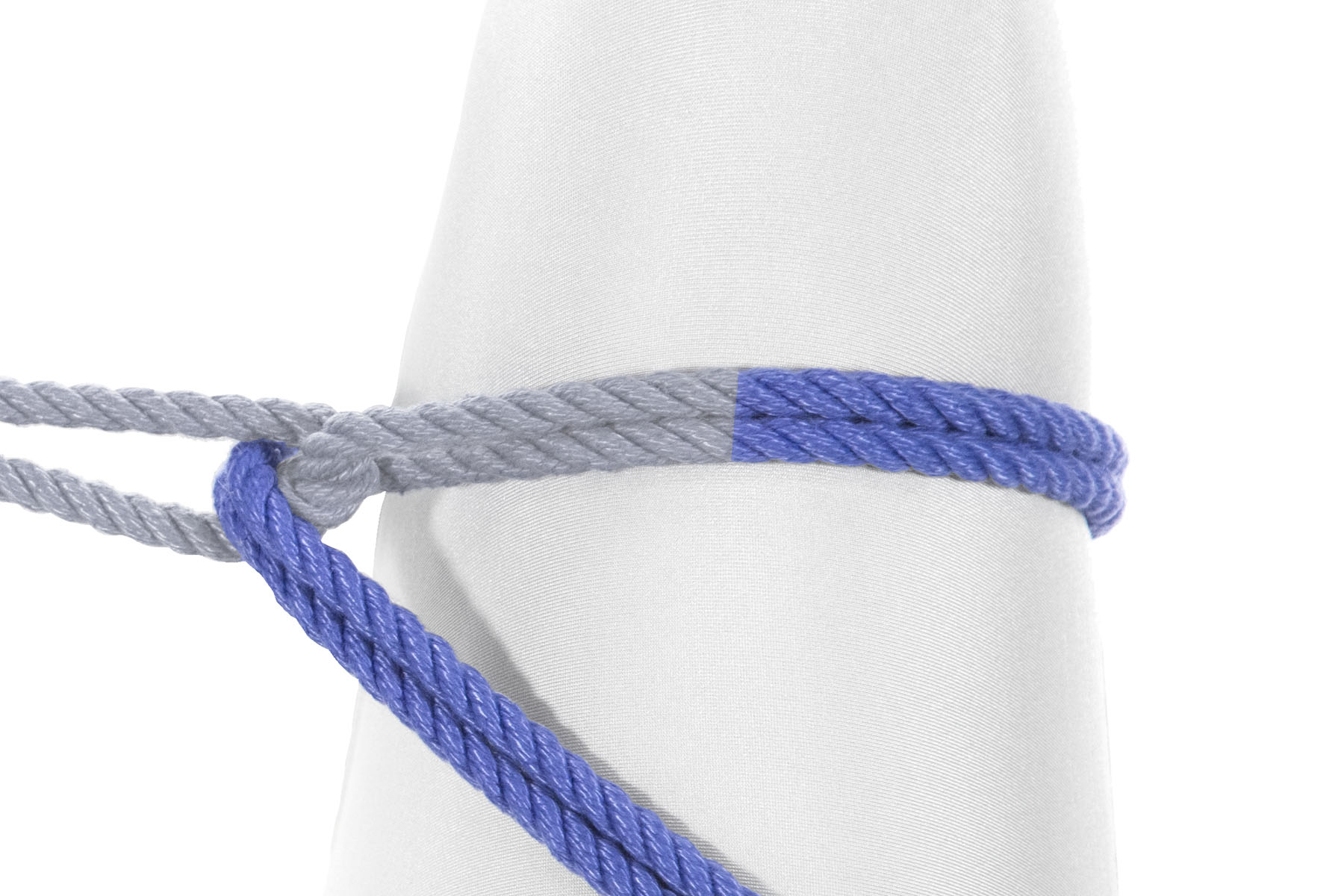
3Wrap the rope clockwise around your right leg and through the standing part, going over the overhand knot.
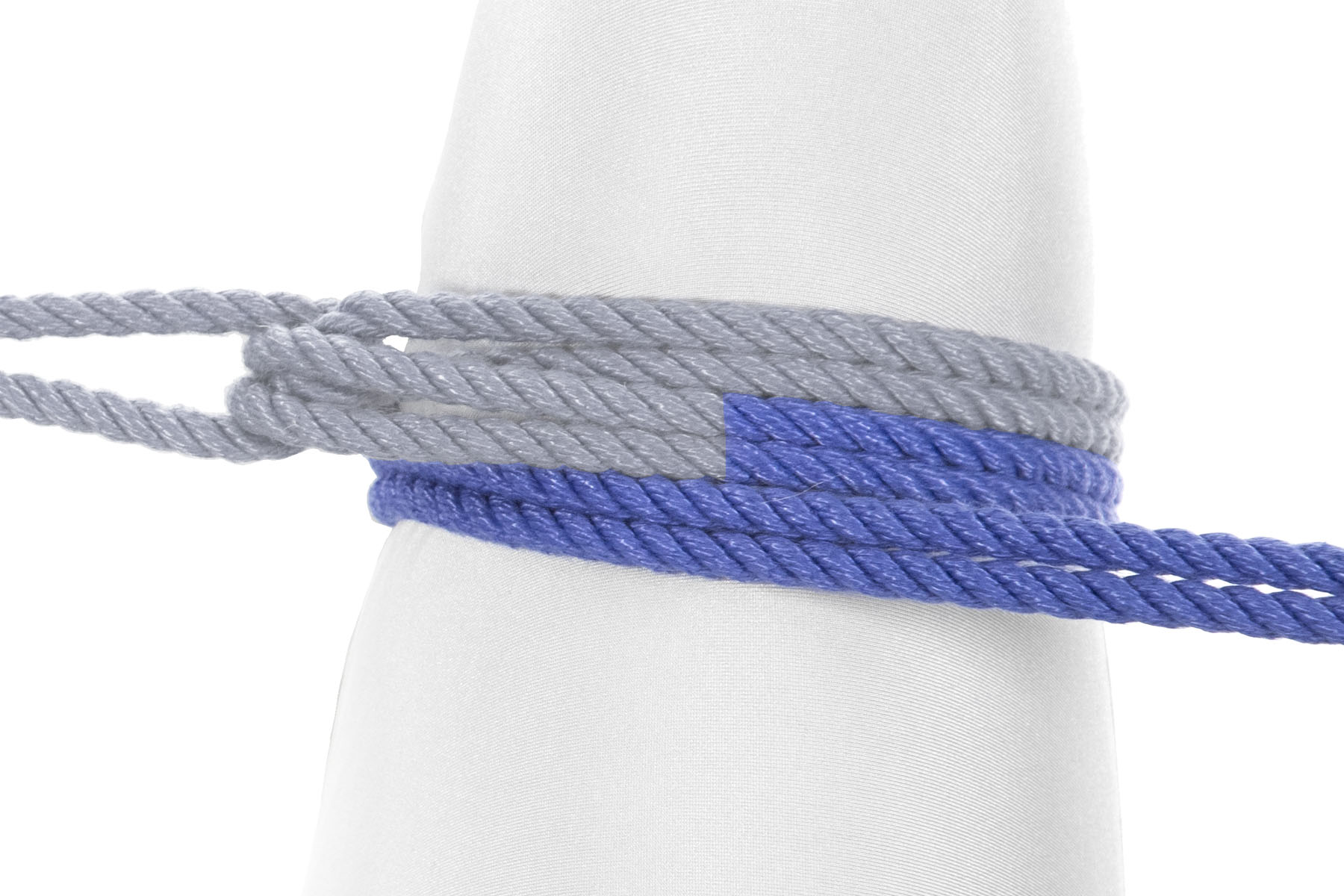
4Make another wrap around your leg.
You don’t need to go over the knot this time.
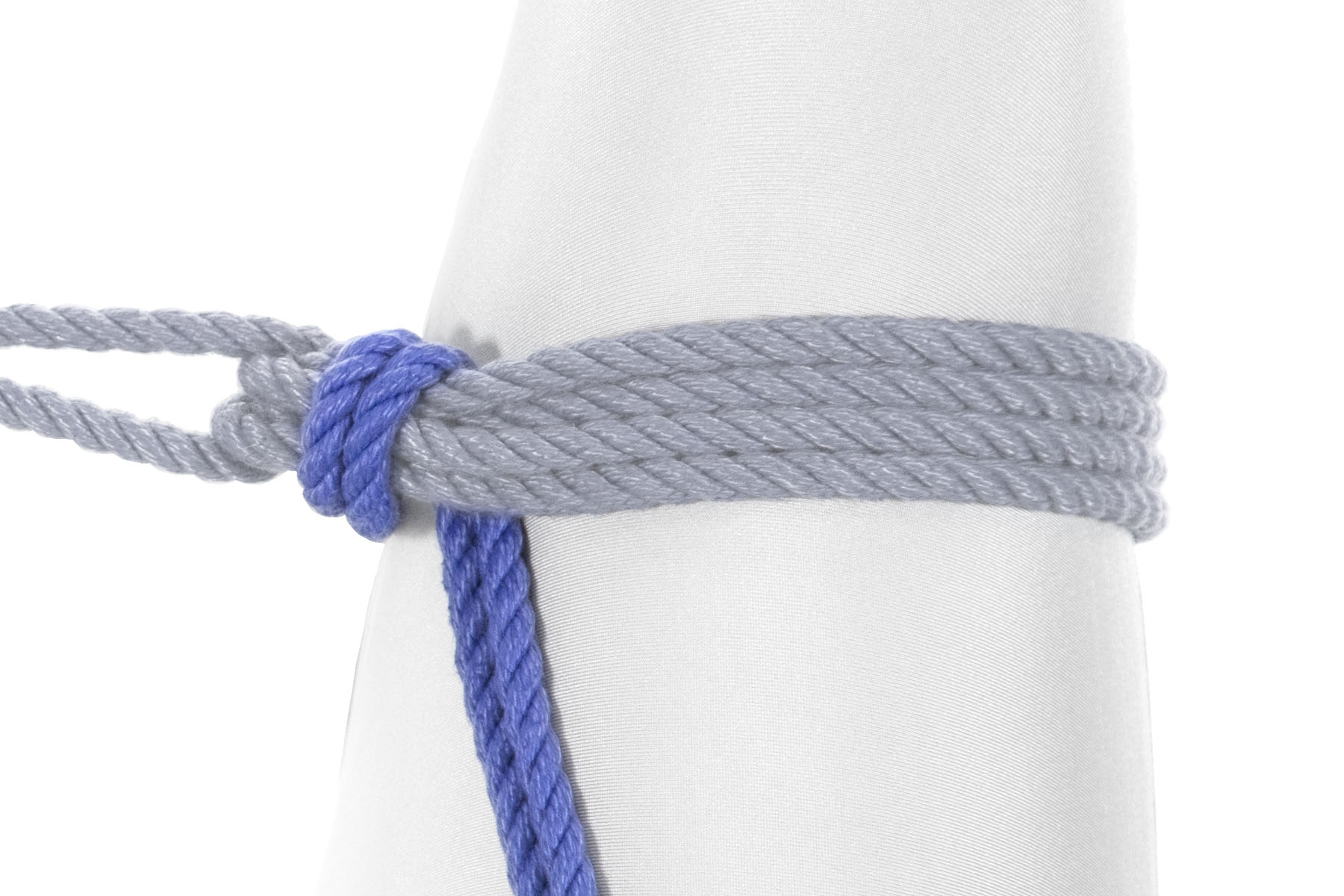
5Right after the standing part, cross over all the wraps and then go back underneath them.
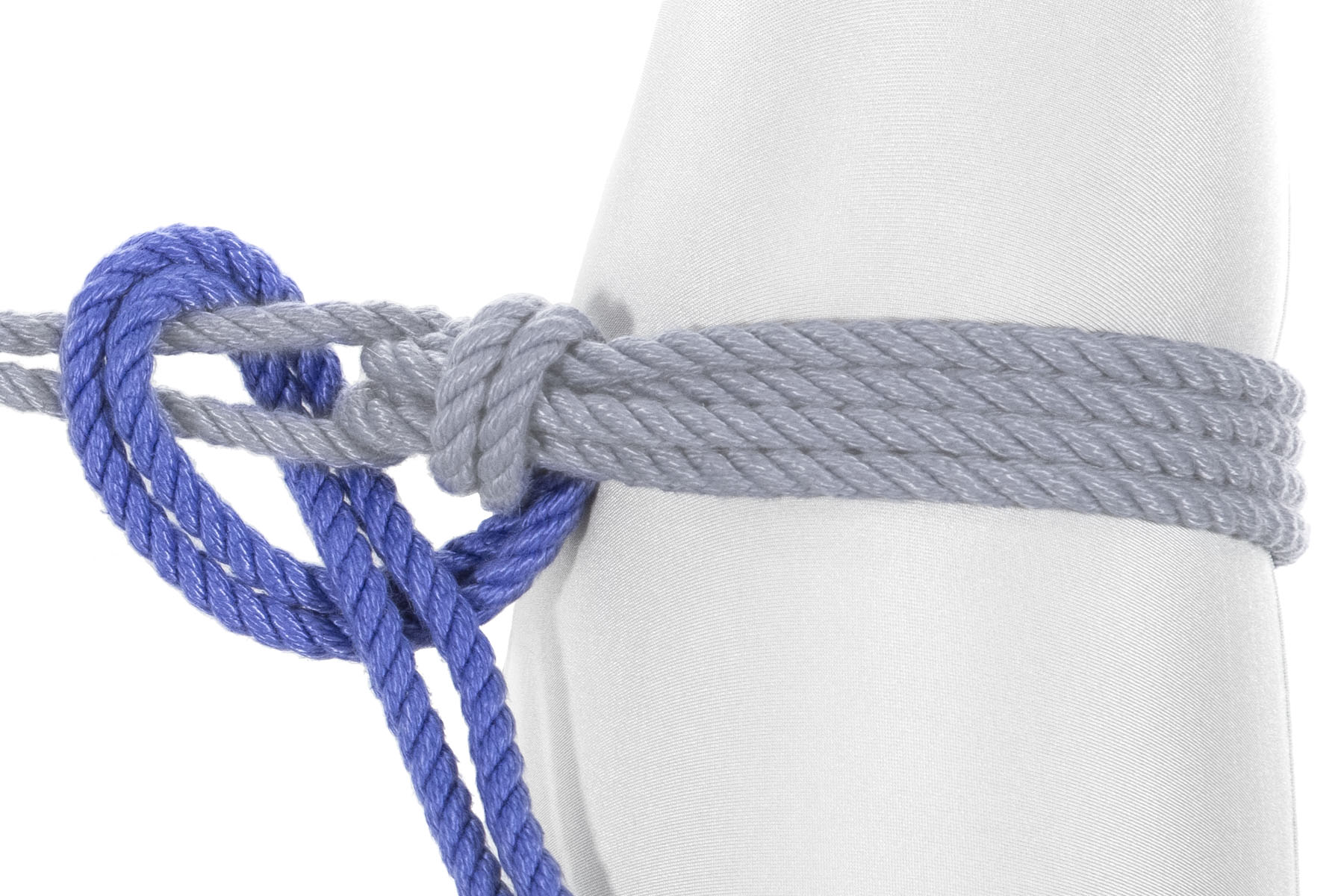
6Make a half hitch around the standing part.